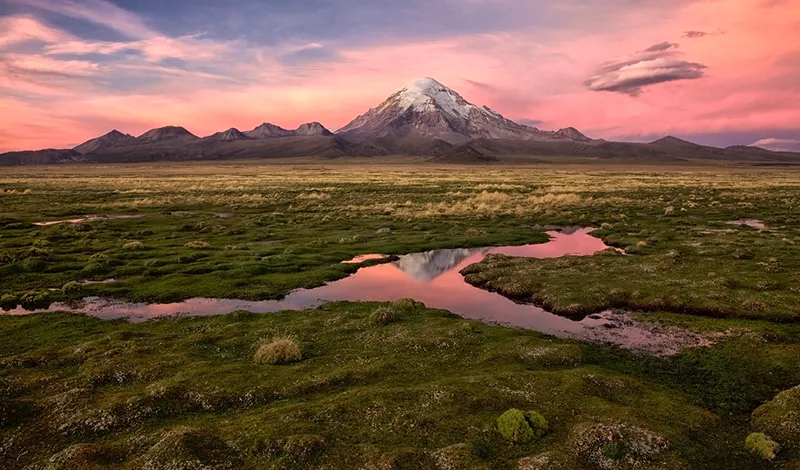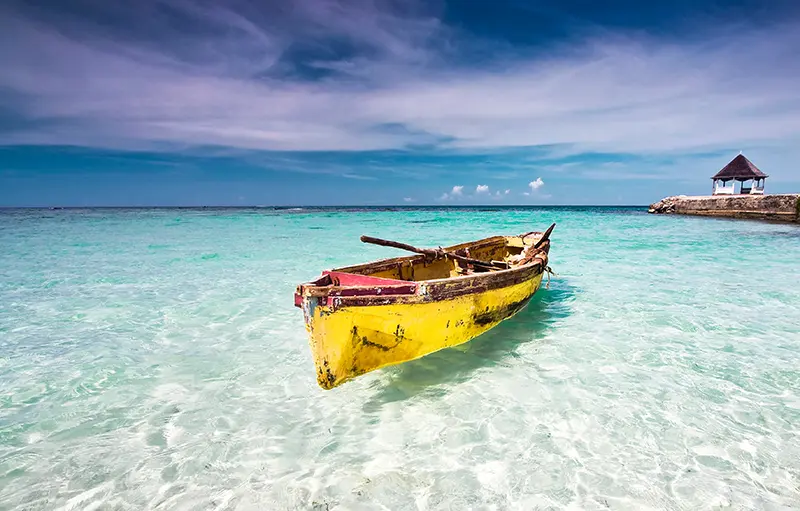South America’s Longest River
The Amazon River is one of the largest rivers in the world, located in South America. It is about 6,400 km long and flows into the Atlantic Ocean.
The Amazon passes through several countries, including Brazil, Peru, Bolivia, Ecuador, Colombia, and Venezuela. It is a vital source of fresh water and rich ecosystems, including jungles and rainforests.
The Amazon is also known for its great wealth of animal and plant life, including such species as piranha fish, ara, pink dolphins, jaguars, monkeys, orchids, giant vines, and more.
History
The real discoverer of the Amazon was Francisco de Orellana, an officer in Gonzalo Pizarro’s band of conquistadors, who on his second attempt in December 1541 In his second attempt to conquer new lands in the name of the king of Spain, he sailed 600 kilometers down the Napo River to its confluence with a large river near the present-day city of Iquitos, then followed the river, now known as the Amazon, for 1,200 kilometers to reach its confluence with the Rio Negro (near present-day Manaus) on June 3, 1542. It was here that the conquistadors encountered a tribe of militant Indians, whom Orellana, tired from the long journey, might have mistaken for women because of their long hair and bright coloring, although it is possible that women were also among the attackers. Orellana later reported the incident to Charles V, who, mindful of the ancient Greek female warriors, christened the river the Amazon. But at the time, for the members of the expedition, it was the Great River, the Mar Dulce, and also the River Cinnamon, because Orellana had spotted trees on its banks akin to cinnamon trees. The expedition continued all the way to its mouth, overcame the tidal wave, and entered the ocean. Thus, the Amazon in its main course turned out to be navigable, and the Orellana expedition was one of the most successful and incredible in the history of geographical discoveries.
The second descent of the Amazon was made by Lope de Aguirre, another furious Spanish conquistador. But the first ascent from the mouth of the Amazon to Napo, then up to Quito, and then back down the same route was made in 1637-1647 by the Portuguese Pedro Teixeira, who enlisted nearly two thousand natives and negroes to transport food, ammunition, and barter goods by canoe. From then on, trading and missionary settlements began to form on the banks of Amazon tributaries. By the mid-nineteenth century the population of the Amazon reached 300,000, two-thirds of whom were Europeans and slaves.
In the 1850s, with the easy hand of Emperor Pedro II of Brazil, navigation began on the Amazon, and the first steamships made regular runs between Manaus and Tabatinga and between Pará (now Belém at the mouth of the river) and Manaus. Steamship companies multiplied, and small ships began to ply many tributaries of the Amazon. In 1867, under pressure from other maritime powers and states of the upper Amazon basin, the Brazilian government opened the river to all flags, but with certain restrictions. At the turn of the 20th century, the Amazon became a major supplier of rubber, cocoa beans, Brazil nuts and many other exotic goods for export Until recently, the Nile River was considered the longest river in the world, as it is still listed in most textbooks. However, the Amazon is not enough glory of the most full and mighty river according to recent studies, it is longer than the Nile, though not all scientists agree with it. The question is which of the two rivers, the Marañón or the Ucayali, should be considered the main source of the Amazon. If Marañón, then the length of the Amazon will not be more than 6500 km, but if you count from Apacheta – the source of the Ucayali, the length of the great river grows to more than 7000 km.
From the confluence of the Marañón and the Ucayali southwest of the Peruvian city of Iquitos begins the true Amazon, which in Brazil, however, until Manaus, is called Solimoes. The yellow-sandy waters of Solimões in the area of Manaus merge with the black-transparent waters of Rio Negro and flow side by side for 6 km without mixing – a two-color stream.
In some places the Amazon channel is divided into two main currents with inner and side arms and forms a complex intertwined system of natural channels, cutting into numerous islands of flat land, nowhere rising more than 5 m above the water level. The slope of the river channel in the flat Amazon valley is only 1 cm per 1 km, and it turns out that the river actually moves only due to tributaries “pushing” the water. For the same reason, during the rainy season it can overflow more than 100 km in width. The Amazon throws about 220 thousand cubic meters of water into the Atlantic Ocean per second (during the rainy season this figure increases to 300 thousand), desalinating the ocean within a radius of 500 km.
The river is navigable almost its entire length. Ocean-going ships reach Manaus from the Atlantic, all other ships reach Iquitos and above.
The size of the Amazon delta is also controversial because of the geographical peculiarity of the area. If the Para River is considered a branch of the mouth of the Amazon, the Amazon delta grows to 330 km and includes Marajo Island, the largest island in the world (the size of Denmark), surrounded by fresh water. If you consider Para a continuation of the Tocantins River, then the width of the mouth of the Amazon to the Marajo Island is about 180 km, which is also quite a lot.
The famous Amazon jungle occupies almost the entire area of its basin. This is the largest massif of tropical forests in the world, which is rightly called the “green lungs” of the planet, because the trees of the Amazon jungle produce about a third of the oxygen in the Earth’s atmosphere. Alas, between Manaus and the mouth of the Amazon, the jungle has lost its pristine appearance, as humans have already done enough to devastate it. And the onslaught of civilization that disrupts the ecological balance of this system continues.
General information
- Amazon countries: Brazil, Colombia, Ecuador, Peru, Bolivia.
- Major port cities: Manaus, Iquitos, Macala, Santaren.
- Sources: Maracion, Ucayali (it begins in the Andes).
- The largest tributaries: its right tributaries are Jurua, Purus, Madeira, Tapajos, Shingu, Tocantins; left tributaries are Isa Japura, Rio Negro.
- Mouth: Atlantic Ocean.
- Length: about 7,000 km.
- Average water flow rate at the mouth: 219,000 m3/sec.
- Basin area: 7,050,000 km2.
- Average depth in the rainy season: 40 m, maximum (at the mouth): 140 m.
- Width at the mouth: 330 km (including the Para).
- Amazon jungle area: 5,500,000 km2.
Economy
- Natural resources: timber, rubber.
- Fishing.
- Shipping.
- Forestry.
Climate and weather
- Equatorial, humid.
- Average annual temperature: +25°C.
- Annual precipitation: 2000-3000 mm.
Attractions
- Plant and animal life;
- Manaus (Brazil): Indian Museum, floating markets, Rio Negro Palace, azulejos blue ceramics;
- Iquitos (Peru): close to the Pacaya Samiria, Amacayacu, and other national reserves;
- Santarén (Brazil): ancient Amazonian ceramics.
Fun Facts
- The Amazon is a river without a single bridge. It is not because of its gigantic size: the width of the river does not exceed the limits of modern engineering. For the most part, the Amazon runs through the rainforest, where there are very few roads and even fewer cities, so bridges are simply not necessary.
- The Amazon and the jungle that surrounds it are home to amazing animals and plants. There are over 2,500 species of fish alone (one-third of the freshwater fauna of the world), including the giant arapaima, which reaches 3-4 meters in length, the electric ray and piranhas. There are river dolphins, anacondas and caimans share the shallow waters, capybaras and tapirs, jaguars and ocelots inhabit the banks, and monkeys, sloths, parrots, toucans and hummingbirds in the tree crowns.
- Since the slope of the Amazon lowlands is very small and the river does not have a delta that extends beyond the shoreline (the ocean carries away all the silt brought in by the river), the ocean influence is very strong in the lower Amazon: the tides spread up the river for a thousand kilometers. The local Indians called this phenomenon pororoka, or “rumbling water. The collision of the river water with the tidal wave creates a steep water wave up to 6 meters high, which rolls up the river arms with a roar and rumble, sweeping away everything in its path. This was the first time the expedition of Francisco de Orellana encountered it.
- The Amazon has more river flow than the world’s ten largest rivers combined.
- Only the Amazon is home to the tambaci fish, which feeds on the fruit of palm trees and rubber trees that fall into the water, easily gnawing the bones.




